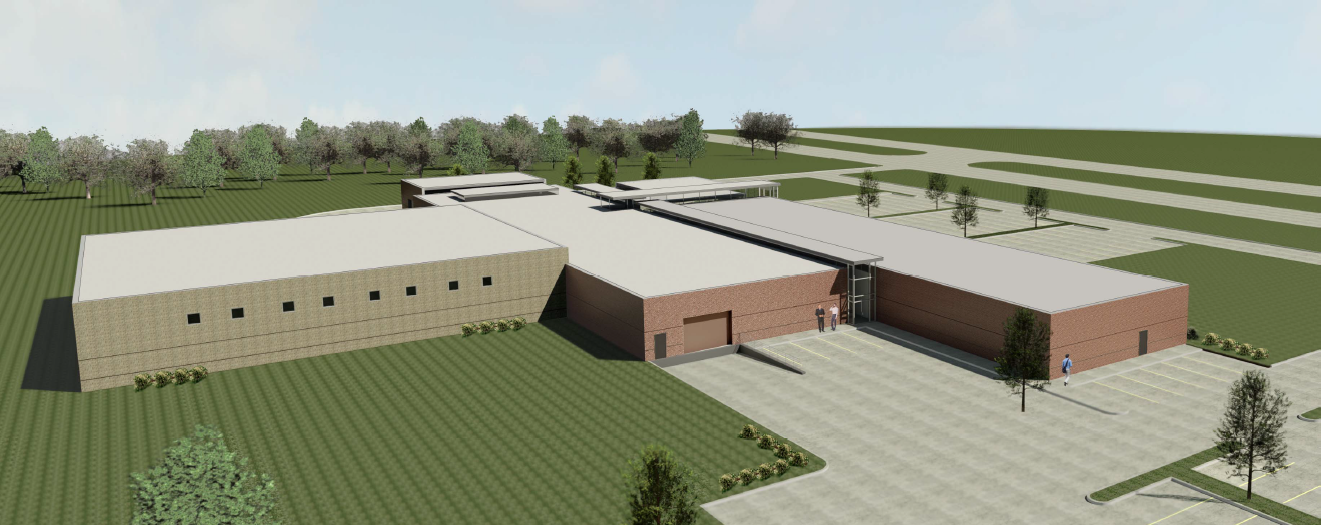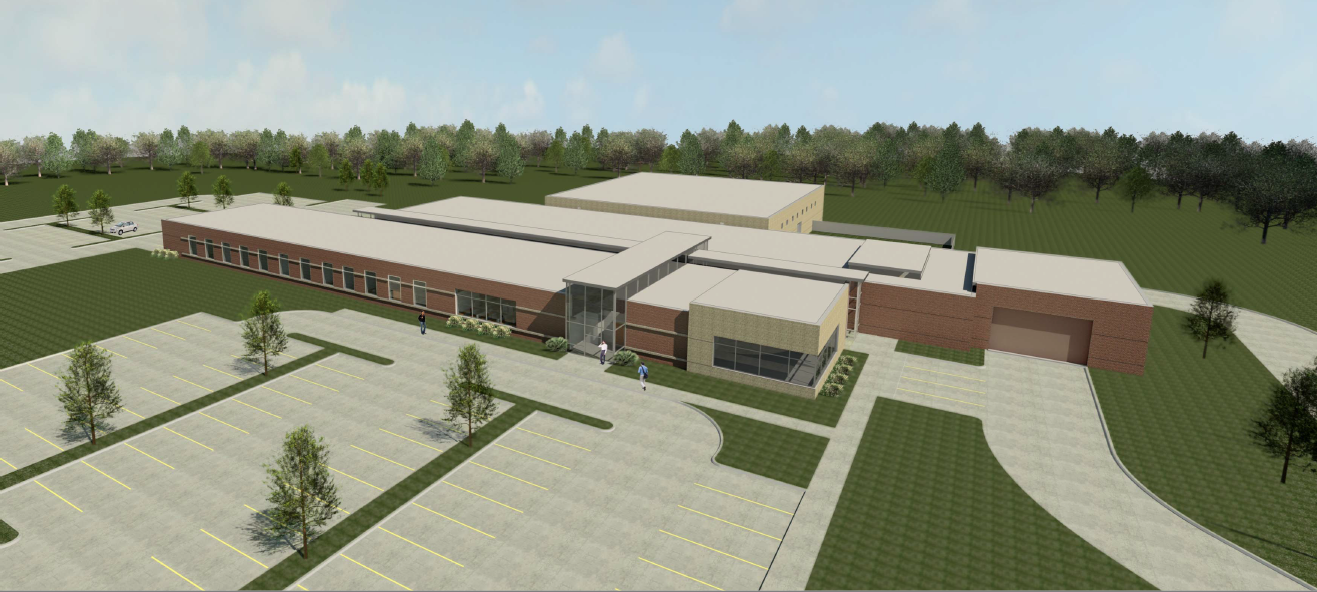On May 2, 2017, residents of Dallas County have an opportunity to vote on a bond referendum that, if passed, would create a new Dallas County Sheriff’s law enforcement facility. According to Sheriff Chad Leonard and local supporters, the passage of the referendum is no longer a “want” for Dallas County, but a “need.”
It is common knowledge that Dallas County is one of the fastest growing counties in the State, and nation. But, with the benefits of rapid growth come growing pains around infrastructure and the ability to police effectively and cost-efficiently. Due to the overcrowding of the existing law enforcement facility and a looming deadline to address the situation, it is now a need.
Why is there a “need” for a new Law Enforcement Center?
According to Sheriff Leonard, there are very real consequences for overcrowding, and many of those consequences come in the form of dollars. “It costs a lot of money to be in this situation,” says Sheriff Leonard. When the current facility is at max capacity, the county pays to have other counties shelter their inmates. “We’ve spent $237,000 in just 6 months in other facilities. That’s a lot of money that could be going to our own facility, our own infrastructure here in Dallas County,” he said.
The county also has to pay the wages and fees for the staff doing the transporting. “For a while, we had to take deputies off the streets to do transports. This hurts the average call time for citizens who need help,” said Sheriff Leonard.
According to Perry attorney, Mark Powell, the overcrowding of Dallas County’s existing jail is not a simple problem to solve. “You have to understand that Dallas County and all other law enforcement centers are regulated by state rules on the treatment of prisoners. One of those rules relate to inmate segregation,” he explained. “If Dallas County has one female prisoner,” in its existing jail “she takes up an entire cell block to herself. It’s the same for a juvenile prisoner, or a prisoner with a mental illness. Segregation rules really tie our hands, and a new facility will help with that,” Powell said.
Overcrowding is not a new problem. In 2000, the state jail inspector issued Dallas County a variance (in other words, permission) to add more jail beds to the facility, with the warning they had five years to correct the overcrowding issue. In order to do that, they had to build on to accommodate the population. When the original deadline rolled around, the county was facing more pressing issues and this got put on the backburner. 17 years later, it’s back to the forefront. The department has until 2018 to address the problem, or the state is revoking the extra beds – shrinking space even further.
Why are there so many prisoners?
“The obvious contributor to this situation is the growth of the county,” Sheriff Leonard said. “When the facility was built in the late 1980s, the population was less than 40,000 people. Nobody expected the county to grow another 40,000 in short order. We just have a major overcrowding problem,” he said.
What kind of criminals do you house?
“Ten years ago, we were housing people who mostly committed misdemeanor crimes,” Sheriff Leonard said. “Now, we’re dealing with a lot more felony crimes. We just sent one person convicted of murder to state prison, and we have another murder suspect waiting for trial.”
Why not let the other counties take care of it? Why not keep allocating the work?
Other counties are also facing overcrowding. Sheriff Leonard frequently exports his inmates to Story County, but they too are getting close to full. “They’ve asked to reduce the amount of prisoners we send,” he said. Polk County has only two of their three wings open, and are near that capacity. “At this rate, we’re going to have to enter into an agreement with three or four different jails,” Sheriff Leonard said.
“Transporting prisoners is only going to become more problematic the longer we put the issue off,” he explained. “We’re responsible for the prisoners regardless of where they are housed. We try to farm out prisoners that have already been sentenced, but sometimes we have to make a special trip just to get them back to our courthouse for a 10-15 minute hearing,” he explained. Last year alone, the transports made 158 round trips just to Story County jail. That costs in not only road time, but miles on cars.
And it has safety implications, too.
A few years ago, deputies were doing a transport and one prisoner escaped. “He took off running through the streets of Clive,” Sheriff Leonard said. “They got him back, but it was a safety risk for the public.”
“Any time you’re on the highway, you’re subject to risk,” explained Sheriff Leonard. He cited the case of two Des Moines Police officers who were transporting a prisoner to a court hearing. They were hit head-on by a drunk driver. Both officers and the prisoner were killed. “If you keep everyone under one roof, it’s safer,” he said.
“I’m looking at this as a long term investment. If we continue to do what we’re doing now for the next 30 years, we will spend $22 million over that time period,” Sheriff Leonard said.

Hasn’t there been another referendum on this?
This is actually the fourth time that this issue has been brought to the attention of the voters over the last three years. Every one of them has been structured in a different way.
The first referendum proposed a joint facility which would contain other county offices. According to Sheriff Leonard, the objection was that residents of Adel didn’t want to see county offices leave their square.
The second referendum would have had the same result: empty buildings on the square.
With the third referendum, voters thought the proposed facility was too nice, and that it shouldn’t include windows. “I don’t think we did a good job of getting the word out that this was also going to be the Sheriff’s office, not just the jail,” Sheriff Leonard explained. “We weren’t able to get a lot of facts out to the public – we were short on time.” (For the record, they are legally obligated to provide prisoners with natural light and outside air a couple of times per week.)
This time around, Sheriff Leonard has support in getting this referendum passed. “We want to keep Dallas County a safe place to live, work, and raise a family,” Mark Powell said. Powell is with the non-partisan group Citizens for Dallas County, a group made up of 15 people from around the county who want to see the new facility built. As an attorney, and a former magistrate judge, Powell has worked closely with the Sheriff’s Department and has seen firsthand the issues the county faces. “The current facility isn’t meeting our needs now, and definitely won’t meet our needs in the future,” he explained. “It’s no longer a want, it’s a need.”
Powell indicated that the Citizens for Dallas County group came together to offer its support to Sheriff Leonard but asked that the County Board of Supervisors present their plan to them before deciding to advocate. “We felt it important to have all the cards laid out on the table, before taking this issue before the voters for a fourth time. We asked the Supervisors to present their plan, explain the need and the total cost.”
From there, Powell and the Citizens for Dallas County have focused on sharing the need for the jail both on a safety level and a fiscal level. “I don’t think people are aware of how much we as taxpayers spend to transport Dallas County inmates to other counties to house our prisoners.”
Would we house prisoners from other counties?
“The new facility isn’t specifically designed to accommodate other counties, so I don’t want to make promises I can’t keep,” said Sheriff Leonard. “However, if we have a lot of empty beds and another county needs room, we would be able to look at entering into an agreement to charge for that service.”
What will the new facility include?
“Many citizens think that they don’t need a new sheriff’s office, they have a police department. That’s not the case,” Sheriff Leonard explained. “We do all those things they don’t do, including housing their prisoners.” says Sheriff Leonard.
The new facility will house the sheriff’s office and all of the services that come with it, like administrative and civil services, highway patrol, investigations, gun permits, sex offender checks, etc. These are the things your local police department might not handle.
If the referendum passes, the facility is projected to open – optimistically – in May 2019.
How many new beds will there be?
The facility is projected to have 132 total beds. There are state rules that apply; every prisoner gets a certain square footage of “unencumbered living space.”
Will we be in this situation again?
The building will sit on 40 acres the county already owns – which is also the primary reason for the selection of its location. The building has been designed so that it can expand toward the west. “New pods can continue to be hooked right into the existing one,” he said. “You cut a new door and you’re in – it’s a very neat design and a very proficient jail.” The layout of the facility is such that officials can stand in the middle of the jail and see all prisoners at one time.
Curtis Pion, a Dallas Center City Council member who has been with the Polk County Sheriff’s Office for 20 years added “The long term vision for this facility and this site is solid. This is the best plan that has ever been offered to meet the needs of today and tomorrow for all of Dallas County. It is well thought out, well designed, and will provide for the legal requirements of the prisoners. It will also provide much needed work space for all of the staff who aren’t assigned to a patrol car.”
What will happen to the old building?
Once the county reaches a population of 82,000, it will be obligated to build another courtroom. “The county has decided they’re going to turn the current jail into a courtroom and move criminal court to this building,” Sheriff Leonard said. They will maintain a few cells for easy transport and containment. This change will increase the security of court operations, as prisoners will no longer need to be walked across the street.
Final thoughts
“This facility – the overall solution – takes care of all the problems we’re going to have with overpopulation,” Sheriff Leonard said. “There’s nothing here that’s fluff. We’ve designed it to fit the needs of the employees of the Sheriff’s Office, as well as the county. And there will be no empty spaces on the Adel square.”
Sheriff Leonard has scheduled public tours of the existing jail, as well as town hall meetings throughout the county to discuss the Referendum. For a list of jail tour and town hall dates, or for more information, go to www.dallascountyvote.com.
